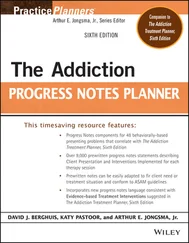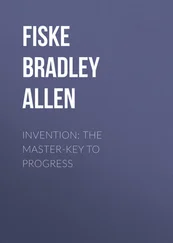3 Assess Anger Dynamics (3)The client was assessed for various stimuli that have triggered his/her/their anger.The client was assisted in identifying situations, people, and thoughts that have triggered his/her/their anger.The client was assisted in identifying the thoughts, feelings, and actions that have characterized his/her/their anger responses.
4 Administer Psychological Testing (4)The client was administered psychometric instruments designed to objectively assess anger expression.The client was assessed with the Anger, Irritability, and Assault Questionnaire (AIAQ).The client was assessed with the Buss-Durkee Hostility Inventory (BDHI).The client was assessed with the State-Trait Anger Expression Inventory (STAXI).The client was given feedback about the results of the assessment.
5 Refer for Physical Examination (5)The client was referred for a complete physical examination to rule out organic contributors (e.g. brain damage, tumor, elevated testosterone levels) to his/her/their anger.The client has complied with the physical examination and the results were shared with him/her/them.The physical examination has identified organic contributors to poor anger control and treatment was suggested.The physical examiner has not identified any organic contributors to poor anger control, and this was reflected to the client.The client has not complied with the physical examination to assess organic contributors and was redirected to do so.
6 Assess Level of Insight (6)The client's level of insight toward the presenting problems was assessed.The client was assessed in regard to the syntonic versus dystonic nature of his/her/their insight about the presenting problems.The client was noted to demonstrate good insight into the problematic nature of the behavior and symptoms.The client was noted to be in agreement with others' concerns and is motivated to work on change.The client was noted to be ambivalent regarding the problems described and is reluctant to address the issues as a concern.The client was noted to be resistant regarding acknowledgment of the problem areas, is not concerned about them, and has no motivation to make changes.
7 Assess for Correlated Disorders (7)The client was assessed for evidence of research-based correlated disorders.The client was assessed in regard to his/her/their level of vulnerability to suicide.The client was identified as having a comorbid disorder, and treatment was adjusted to account for these concerns.The client has been assessed for any correlated disorders, but none were found.
8 Assess for Culturally Based Confounding Issues (8)The client was assessed for age-related issues that could help to better understand his/her/their clinical presentation.The client was assessed for gender-related issues that could help to better understand his/her/their clinical presentation.The client was assessed for cultural syndromes, cultural idioms of distress, or culturally based perceived causes that could help to better understand his/her/their clinical presentation.Alternative factors have been identified as contributing to the client's currently defined “problem behavior,” and these were taken into account in regard to his/her/their treatment.Culturally based factors that could help to account for the client's currently defined “problem behavior” were investigated, but no significant factors were identified.
9 Assess Severity of Impairment (9)The severity of the client's impairment was assessed to determine the appropriate level of care.The client was assessed in regard to his/her/their impairment in social, relational, vocational, and occupational endeavors.It was reflected to the client that his/her/their impairment appears to create mild to moderate effects on the client's functioning.It was reflected to the client that his/her/their impairment appears to create severe to very severe effects on the client's functioning.The client was continuously assessed for the severity of impairment, as well as the efficacy and appropriateness of treatment.
10 Identify Positive Consequences of Anger Management (10)The client was asked to identify the positive consequences he/she/they have experienced in managing his/her/their anger.The client was assigned the homework exercise “Alternatives to Destructive Anger” from the Adult Psychotherapy Homework Planner (Jongsma).The client was assisted in identifying positive consequences of managing anger (e.g. respect from others and self, cooperation from others, improved physical health).The client was asked to agree to learn new ways to conceptualize and manage anger.
11 List Negative Anger Impact (11)The client was assisted in listing ways that his/her/their explosive expression of anger has negatively impacted his/her/their life.The client was supported as he/she/they identified many negative consequences that have resulted from his/her/their poor anger management.It was reflected to the client that his/her/their denial about the negative impact of his/her/their anger has decreased and he/she/they have verbalized an increased awareness of the negative impact of his/her/their behavior.The client has been guarded about identifying the negative impact of his/her/their anger and was provided with specific examples of how his/her/their anger has negatively impacted his/her/their life and relationships (e.g. injuring others or self, legal conflicts, loss of respect from self or others, destruction of property).
12 Use Motivational Interviewing (12)Motivational interviewing techniques were used to help the client clarify his/her/their stage of motivation to change.Motivational interviewing techniques were used to help move the client to the action stage in which he/she/they agree to learn new ways to conceptualize and manage anger.The client was assisted in identifying his/her/their dissatisfaction with the status quo and the benefits of making changes.The client was assisted in identifying his/her/their level of optimism for making changes.
13 Refer for Medication Evaluation (13)The client was referred to a prescribing clinician to evaluate him/her/them for psychotropic medication to reduce anger symptoms.The client has completed an evaluation by the prescribing clinician and has begun taking medications.The client has resisted the referral to a prescribing clinician and does not want to take any medication to reduce anger symptoms; his/her/their concerns were processed.
14 Monitor Medication Adherence (14)The client's adherence with the clinician's prescription for psychotropic medication was monitored for the medication's effectiveness and side effects.The client reported that the medication has been beneficial to him/her/them in reducing his/her/their experience of anger symptoms; the benefits of this progress were reviewed.The client reported that the medication does not seem to be helpful in reducing anger symptoms; this was reflected to the prescribing clinician.The therapist conferred with the prescribing clinician to discuss the client's reaction to the psychotropic medication, and adjustments were made to the prescription by the physician.
15 Assign Anger Journal (15)The client was assigned to keep a daily journal in which he/she/they will document persons or situations that cause anger, irritation, or disappointment.The client was assigned “Anger Journal” in the Adult Psychotherapy Homework Planner (Jongsma).The client has kept a journal of anger-producing situations, and this material was processed within the session.The client has become more aware of the causes for and targets of his/her/their anger as a result of journaling these experiences on a daily basis; the benefits of this insight were reflected to him/her/them.The client has not kept an anger journal and was redirected to do so.
16 List Targets of/Causes for Anger (16)The client was assigned to list as many of the causes for and targets of his/her/their anger that he/she/they are aware of.The client's list of targets of and causes for anger was processed in order to increase his/her/their awareness of anger management issues.The client has indicated a greater sensitivity to his/her/their angry feelings and the causes for them as a result of the focus on these issues.The client has not been able to develop a comprehensive list of causes for and targets of anger and was gently offered examples in this area.
Читать дальше












